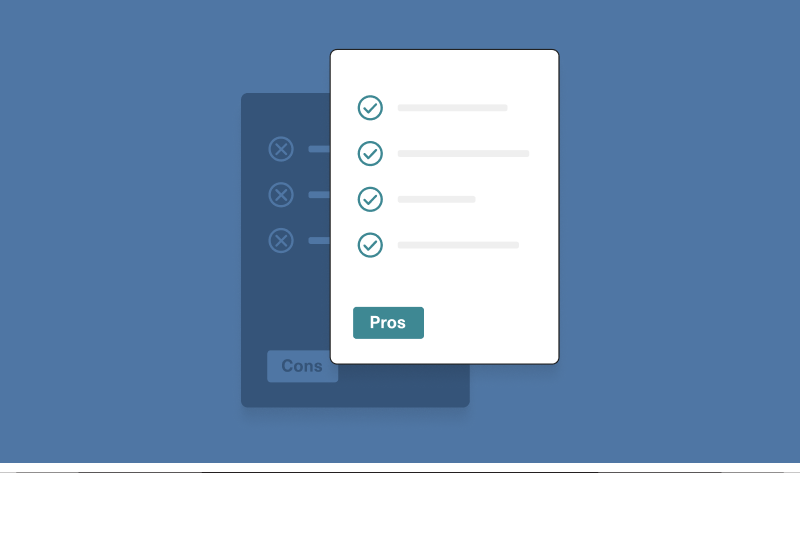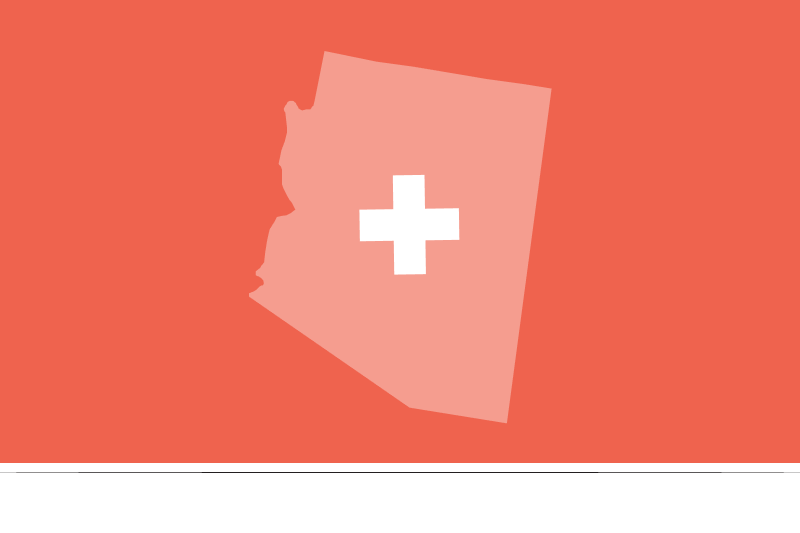Is self-funded health insurance suitable for your small business? Pros and cons.

Last updated on August 8, 2023
If you’ve ever looked into getting health insurance for your small business you’ve likely come across the term self-funded insurance. A self-funded insurance plan is a type of plan where the employer assumes the financial risk for covering employees’ healthcare costs directly. Instead of paying a fixed premium to a traditional insurance carrier, like with a fully-funded plan, the employer sets aside funds to cover anticipated medical expenses for their employees.
Self-funded health insurance offers unique advantages compared to fully-funded plans, making them increasingly more popular among business owners looking to offer health benefits to their employees. Below, we will explore the pros and cons of self-funded health insurance, helping you make an informed decision for your small business.
Pros of self-funded health insurance
Self-funded health insurance offers several advantages to employers, including more flexibility in plan design, the ability to tailor benefits to suit the specific needs of employees, and potential cost savings.
Potential cost savings
One of the key benefits of self-funded health insurance is the potential for cost savings. By assuming the financial risk of providing healthcare coverage, you have more control over how your premium dollars are allocated. This allows you to negotiate healthcare costs directly and eliminate the profit margin typically added by insurance carriers, leading to potential savings for your business.
With a self-funded plan, you are only paying for claims as they happen versus paying annual or monthly premiums for claims that may or may not be filed. Basically, you don’t pay for what you don’t use. Also, with fully-funded plans, a large percentage of your payments go to the carrier to administer the plan. In a self-funded plan, you can pay a Third Party Administrator (TPA) to administer your plan for much less.
Claims transparency
Self-funded plans provide you direct access to claims data. This level of transparency enables you to analyze healthcare utilization patterns, identify cost drivers, and implement targeted cost-saving measures such as care navigation programs. With access to detailed claims information, you can make informed decisions and optimize the efficiency and effectiveness of your health benefits program.
Benefit customization
With self-funded health insurance, you have the freedom to design a benefits package that suits the unique needs of your employees and your business. This flexibility allows you to tailor coverage options, wellness programs, and other benefits to align with your company culture and the healthcare requirements of your workforce.
Access to plan data
With self-funded health insurance, you have direct access to plan data, including claims information, demographics, and utilization patterns. This data empowers you to make data-driven decisions, identify areas for improvement, and implement targeted interventions to enhance the overall health and well-being of your employees.
Flexibility
Self-funded plans offer greater flexibility than fully-funded plans. With self-funded plans, you have the freedom to customize your benefits package, choose specific coverage options, and tailor programs to meet the unique needs of your workforce. You will also have the ability to make changes to your health plan when necessary. For example, at any time you can add or remove participants, or move people to or from specific providers. This flexibility allows you to provide a benefits program that resonates with your employees and supports their overall health and well-being.
Cons of self-funded health insurance
While self-funded plans can be appealing, it’s important to consider that they come with inherent risks and may not be the best choice for every business.
Cost uncertainty and budgeting
Unlike fully-funded plans that have set annual or monthly premiums, self-funded plans do not have pre-established costs. Costs will depend on your employee claims and those claims can vary depending on the care needed. This uncertainty can be stressful and makes it difficult to plan and budget for healthcare year over year. In a self-funded plan, budgeting becomes extremely important in the planning phase and will depend on employee demographics such as age, region, and number of dependents. The important thing to try to anticipate is the number and amount of claims you may be receiving.
Risk for overage
Because you are responsible for paying all eligible claims, regardless of the total cost, unexpected high-cost claims can impact your cash flow and strain your finances. As mentioned above, there can be a lot of uncertainty with these types of plans, so it’s important to have sufficient reserves and risk mitigation strategies such as stop-loss insurance in place to manage potential financial risks.
Administrative burden
Compared to fully-funded plans, self-funded health insurance requires more administrative involvement. You will need to oversee claims processing, manage provider contracts, handle regulatory compliance, and ensure accurate reporting. This administrative burden can be demanding, especially for small businesses with limited staff and resources. It’s important to assess your capacity to handle these responsibilities effectively. Hiring a Third Party Administrator, or a TPA, to handle these types of administrative tasks is one common way that businesses can save time and resources.
Not suitable for all-sized businesses
Self-funded health insurance may not be suitable for all-sized businesses. Smaller businesses with limited financial resources and employee populations may find it challenging to assume the financial risk associated with self-funding. It’s crucial to carefully evaluate your business’s financial stability and risk tolerance before deciding to self-fund your health insurance.
Employee demographics and health risks
When considering self-funded health insurance, it’s important to assess the demographics and health risks of your employee population. If your employees have higher health risks or a history of expensive medical treatments, self-funding may lead to higher costs. Conducting a thorough analysis of your employees’ health status can help you determine if self-funding is a viable option.
Related: What is a self-funded medical plan?
Managing risks and requirements in self-funded health insurance
While self-funding can be risky for some businesses, there are multiple strategies that you can employ to manage the potential risks associated with self-funded plans.
Stop-loss insurance
Stop-loss insurance is a crucial risk management tool for self-funded health insurance. It provides protection against catastrophic claims by reimbursing you for claims that exceed a certain threshold. By obtaining stop-loss insurance, you can limit your financial exposure and ensure that your business is protected from high-cost claims.
Risk mitigation strategies
Implementing risk mitigation strategies can help control costs and manage potential risks. These strategies may include healthcare navigation services to find high value care, utilization review programs to monitor healthcare utilization and identify cost-saving opportunities, and disease management programs to support employees with chronic conditions.
ERISA compliance
Self-funded health insurance plans are subject to the Employee Retirement Income Security Act (ERISA) regulations. It’s crucial to ensure compliance with ERISA requirements, including providing plan documents, summary plan descriptions, and annual reports to participants.
Affordable Care Act (ACA) requirements
Self-funded health insurance plans must also comply with certain provisions of the Affordable Care Act (ACA), including coverage for essential health benefits, preventive care services without cost-sharing, and compliance with annual reporting requirements.
State regulations and reporting
In addition to federal regulations, self-funded health insurance plans must comply with state regulations and reporting requirements. It’s essential to understand the specific rules and regulations applicable to your state and ensure compliance to avoid penalties or legal issues.
Alternatives
With Sana’s level-funded plans, which combine elements of both self-funded and fully-funded plans, you can have the best of both worlds. Level-funded plans are an excellent way for small businesses to have many of the advantages of a fully-funded plan, without assuming as much risk. Request a quote today.
Related: Level-funded vs. self-funded plans – what’s the difference?
Self-funded health insurance FAQs
There is no strict minimum employee size required for self-funding; it can be suitable for businesses of various sizes.
Assessing your financial stability, risk tolerance, and consulting with experts can help determine if self-funding is financially viable for your business.
Self-funded health insurance plans must comply with federal regulations such as ERISA and certain provisions of the Affordable Care Act (ACA), as well as state regulations.
Yes, it is possible to switch from a fully insured plan to a self-funded plan, but careful evaluation and planning are necessary to ensure a smooth transition.
Self-funded health insurance can potentially lead to cost savings through cost transparency, negotiation of healthcare costs, and elimination of insurance carrier profit margins.







